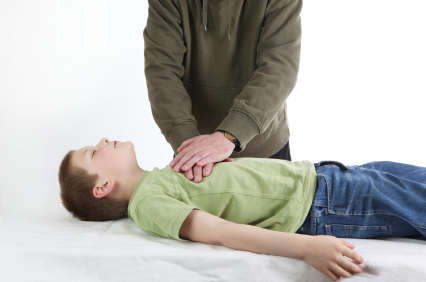In 2010, the American Heart Association (AHA) issued revised guidelines for CPR and Emergency Cardiovascular Care Science (ECCS). Among the highlights and changes:
- ABC changed to CAB. The biggest change in the basic life support sequence is from "A-B-C" (Airway, Breathing, Chest Compressions) to "C-A-B" (Chest compressions, Airway, Breathing) for adults and pediatric patients (children and infants, excluding newborns). This means no more "looking, listening and feeling," as the performance of these steps is inconsistent and time consuming. The key to saving a cardiac arrest victim is action, not assessment.
Call 911 the moment you realize the victim won't wake up and doesn't
seem to be breathing right.

- Hands-only (compression only) CPR is now encouraged for the untrained lay rescuer on adult victims who collapse in front of them.
- Chest compressions before giving rescue breaths.
- Increased focus on methods ensuring high-quality CPR (at appropriate depth and rate). The new guidleines call for rescuers to
- push harder on the chest (at least 2 inches deep for adults and children);
- faster (at least 100 compressions per minute or 30 compressions in about 18 seconds); and
- with minimal interruptions. Every interruption in chest compressions interrupts blood flow to the brain, which leads to brain death if the blood flow stops too long. It takes several chest compressions to get blood moving again. AHA wants you to keep pushing as long as you can. Push until the AED is in place and ready to analyze the heart. When it is time to do mouth to mouth, do it quick and get right back on the chest.
Source: Field JM, Hazinski MF, Sayre MR, Chameides L, et al. Part 1: Executive summary: 2010 American Heart Association Guidelines for Cardiopulmonary Resuscitation and Emergency Cardiovascular Care. Circulation 2010;122(S640-S656.
Updated March 10, 2011








